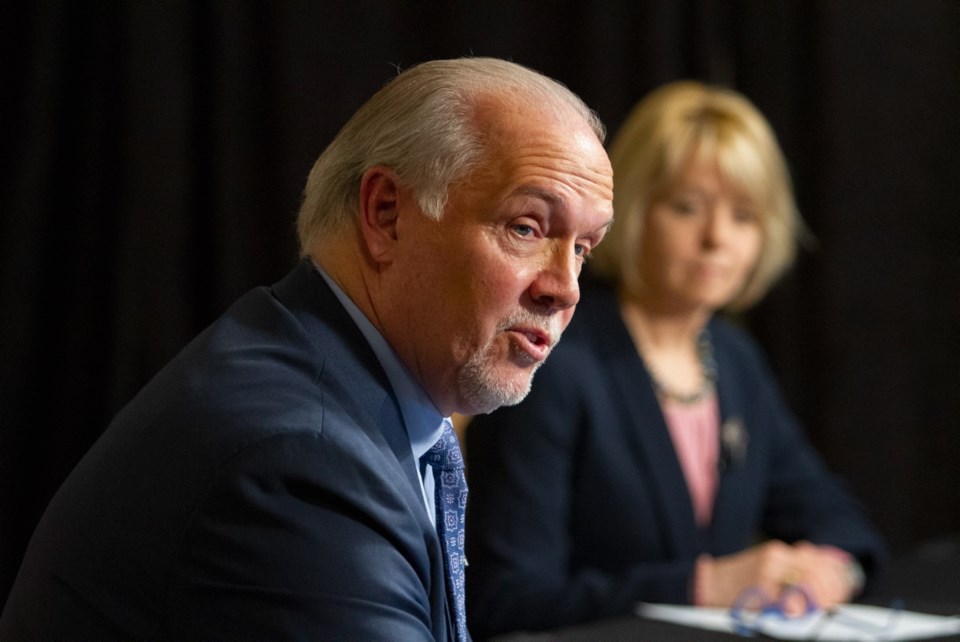Premier John Horgan has announced his government’s strategy for easing COVID-19 restrictions as we move into summer. Basically his plans mirror a briefing given by the provincial health officer, Dr. Bonnie Henry, two days before.
Dentistry, personal care services including hair styling, restaurants, museums, parks, transit and child care, will reopen in mid-May, along with most provincial parks. Social distancing will still be required.
Postponed surgeries and imaging scans will be restarted, beginning with the most urgent.
If the infection rate remains low, hotels and resorts could reopen in June, with movie theatres and symphony performances following in July.
But schools will remain closed until September, and gatherings of more than 50 people will remain prohibited until a vaccine is produced, an effective treatment is found, or herd immunity is developed, meaning most of us have had the disease and, hopefully, are immune to further infection. At present, none of these appears imminent.
That means, among other things, that if professional sports leagues restart, games will have to be played in empty stadiums.
In weighing this strategy, it may be helpful to consider where B.C. stands as the outbreak declines. At the end of March, close to the peak of the outbreak, the total number of COVID-19 patients in hospital averaged 150. Intensive care unit patients averaged around 70.
Today there are fewer than 70 COVID-19 patients in hospital, with just 20 in ICU wards.
Against this, some 4,000 hospital beds were emptied at the beginning of the outbreak as a precautionary measure. This was done by cancelling all elective surgeries and imaging scans.
The object behind freeing up beds was to prevent hospitals from being swamped by a surge of seriously ill patients.
It was never assumed that the onset of the disease could be halted. Rather the purpose was to spread it out so that the health-care system had enough excess capacity at any point in time to handle whatever demand might arise. This was called flattening the curve.
It appears, for the present, that this objective has been achieved. None of our hospitals have been over-stretched. Indeed, most are running at about 70 per cent of capacity. Less than half the province’s ICU beds are occupied, and most of those patients don’t have the virus.
The question then is whether Horgan’s plan finds the correct balance between moving too quickly, or failing to keep up with an improving outlook. Other provinces and countries are moving more quickly.
Politically speaking, the answer is clear. While businesses that have been shuttered or employees who have lost their jobs are distressed, polls show a large majority of Canadians favour a cautious approach. That is what Horgan is offering.
Medically, the way forward is more difficult to frame. Modelling by the B.C. Centre for Disease Control suggests that so long as social distancing and other forms of personal contact remain at 60 per cent of normal, ICU admissions will fall to about 10 by the end of May. This is the approach Horgan proposes.
The same models show that if personal contact levels return to 80 per cent, ICU admissions will rise to more than 160 by mid-June, and may exceed 200 if we return to 100 per cent of pre-COVID personal contacts.
If these numbers are right, Horgan’s strategy is correct. Although that’s a big “if.”
From the onset of the pandemic, a good part of the modelling, worldwide, has been off, in some cases by several orders of magnitude. Only time will tell if the present forecasts are right.
And here we need to introduce a point of principle. At Henry’s daily briefings, reporters are allowed only one question each. No follow-ups are permitted. This reduces reporters to stenographers, and does not generate confidence in the strategy being adopted.
A robust approach, with sound evidence to back it, should be able to withstand the kind of scrutiny that our media have traditionally applied to any public policy.
Nevertheless, for now, we have at least a basis for optimism. We should also add that country-wide, B.C. is seen as having adopted by far the most successful campaign against COVID-19. That is a tribute to everyone involved.



